Abstract
1. The changes in heart rate and arterial pressure produced by the intravenous injection of isoprenaline (0·5 μg/kg), noradrenaline (1·0 μg/kg), phenylethylamine (0·5 mg/kg), amphetamine (0·5 mg/kg) and by bilateral occlusion of the carotid arteries and by stimulation of the central ends of both vagus nerves have been recorded in groups of dogs anaesthetized with pentobarbitone.
2. The acute intravenous injection of propranolol (1 mg/kg) reduced the increases in heart rate produced by the six procedures, the increases in arterial pressure in response to the last five procedures and the decrease in pressure produced by isoprenaline.
3. This decrease produced by propranolol in the pressor responses resulted from a reduction in the increases in cardiac output elicited by the five procedures and has been attributed to blockade of cardiac adrenergic β-receptors.
4. Three groups of dogs were pretreated for 6 weeks by the oral administration of either placebo, propranolol 50 mg/kg daily or propranolol 10 mg/kg twice daily. The responses to the six test procedures were obtained 17-24 hr after the last dose of propranolol, when only minimal blockade of adrenergic β-receptors was present. In the propranolol-treated groups, the pressor response to carotid occlusion but not to the other test procedures was significantly reduced.
5. The pressor response to carotid occlusion was not reduced in a fourth group of dogs given a single dose of propranolol (50 mg/kg) 24 hr before the test procedures.
6. The mechanism of this selective reduction in the pressor response to occlusion of the carotid arteries is not clear. It is suggested that it may contribute to the hypotensive action of propranolol in man during prolonged oral administration.
Full text
PDF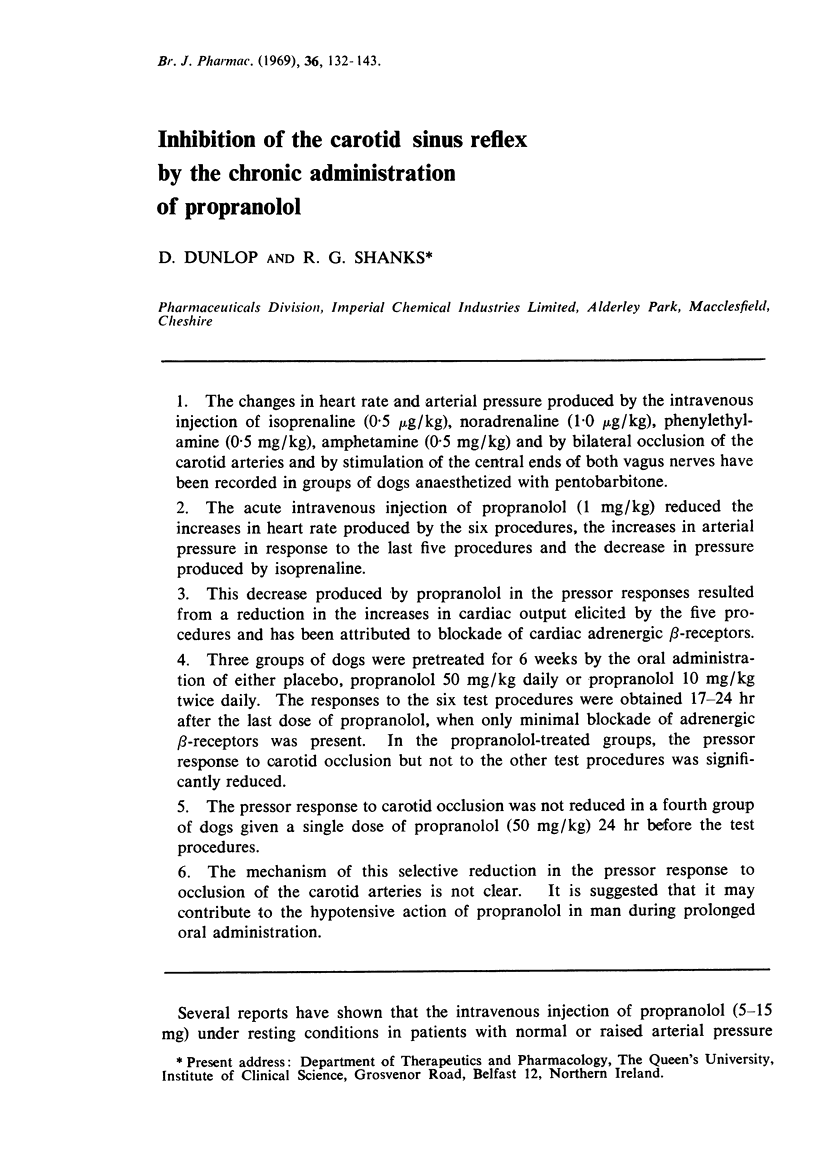
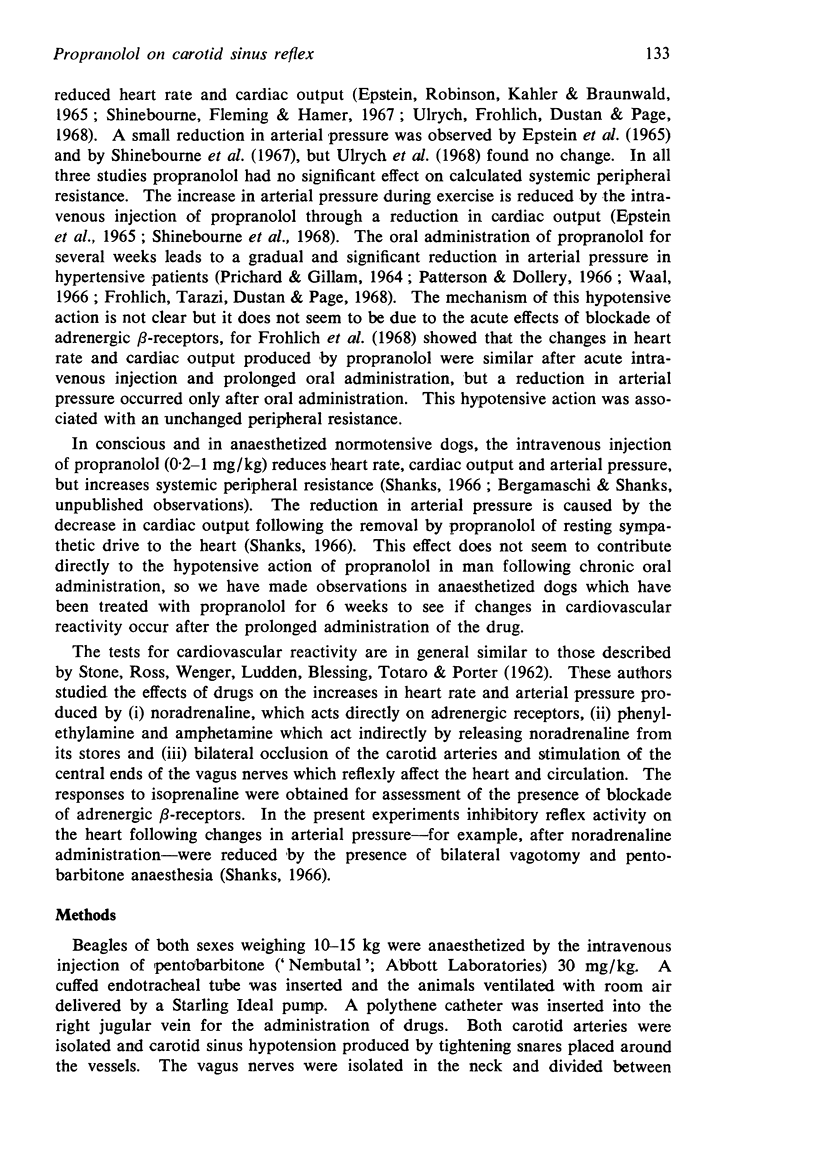
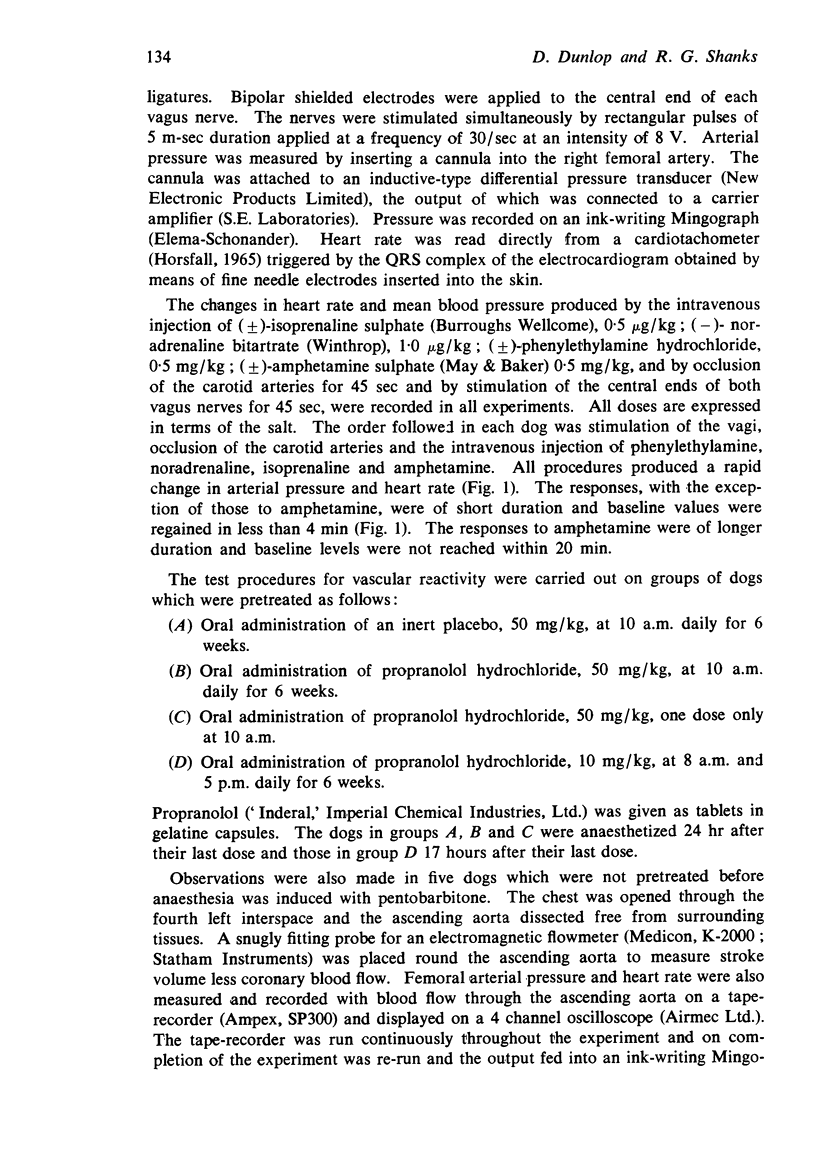
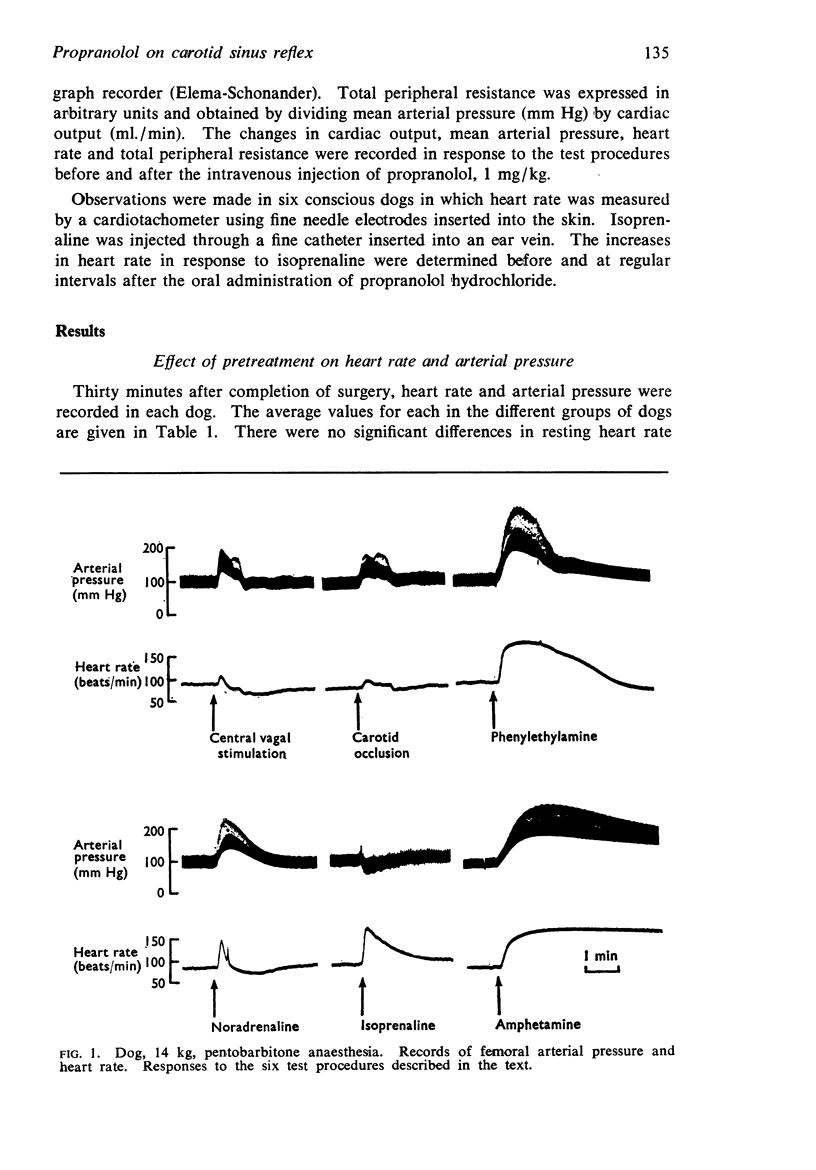
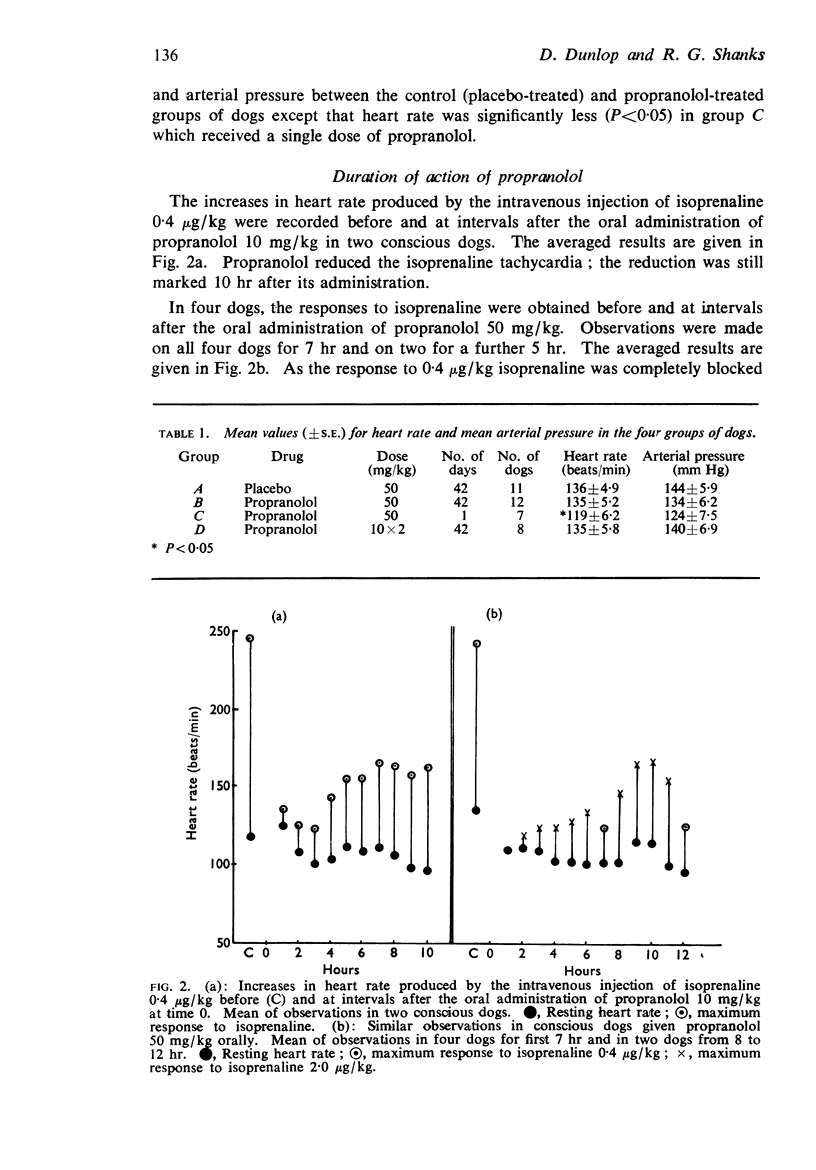
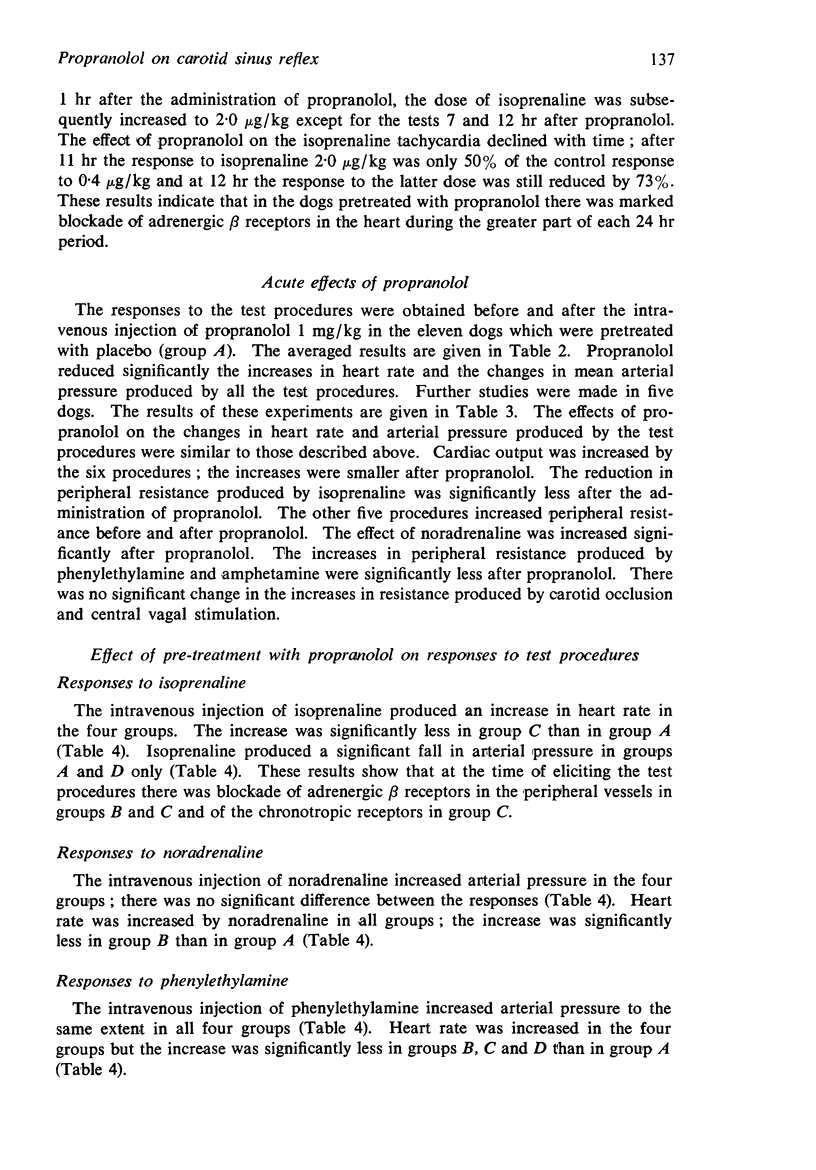
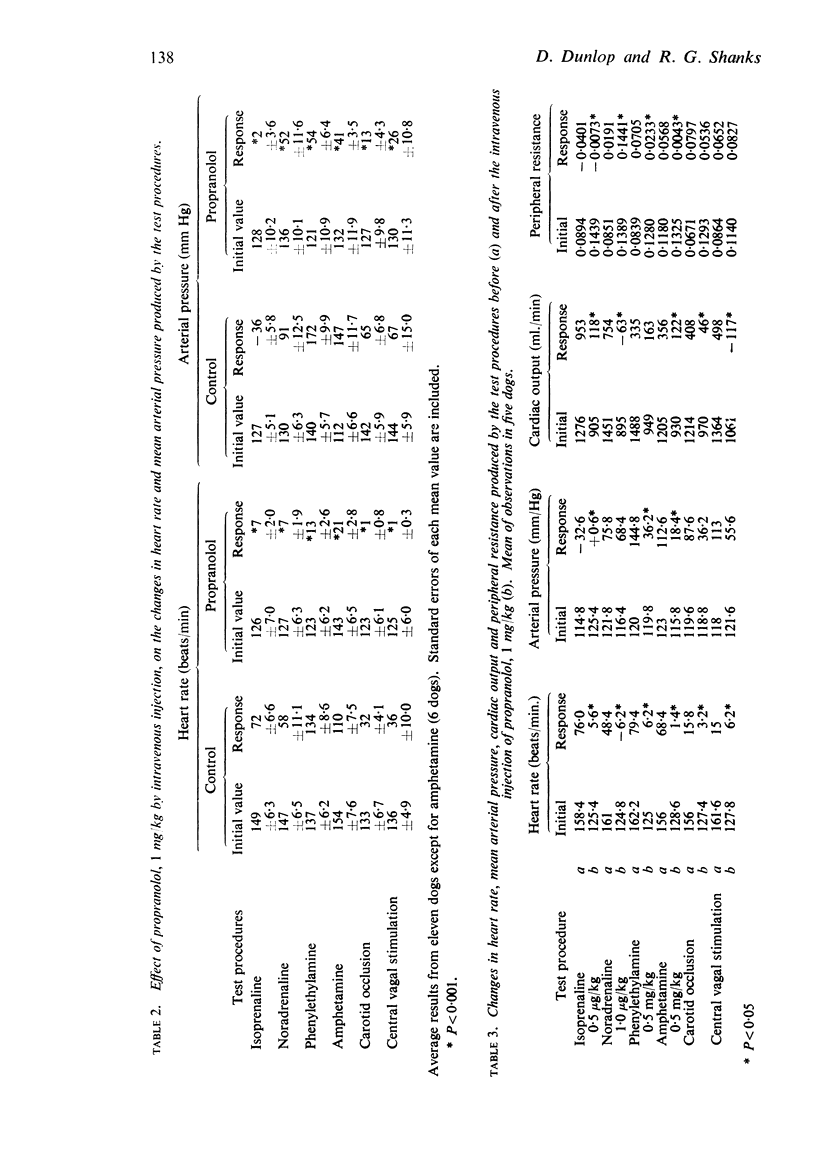
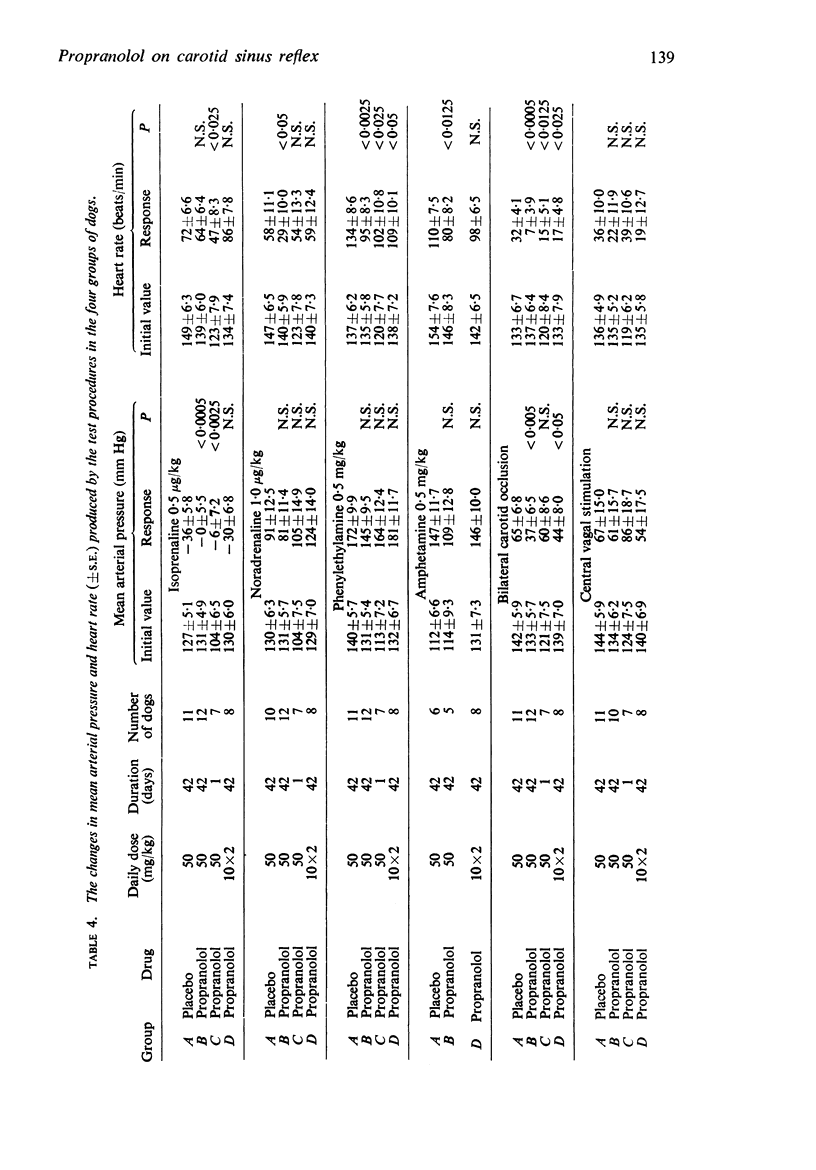
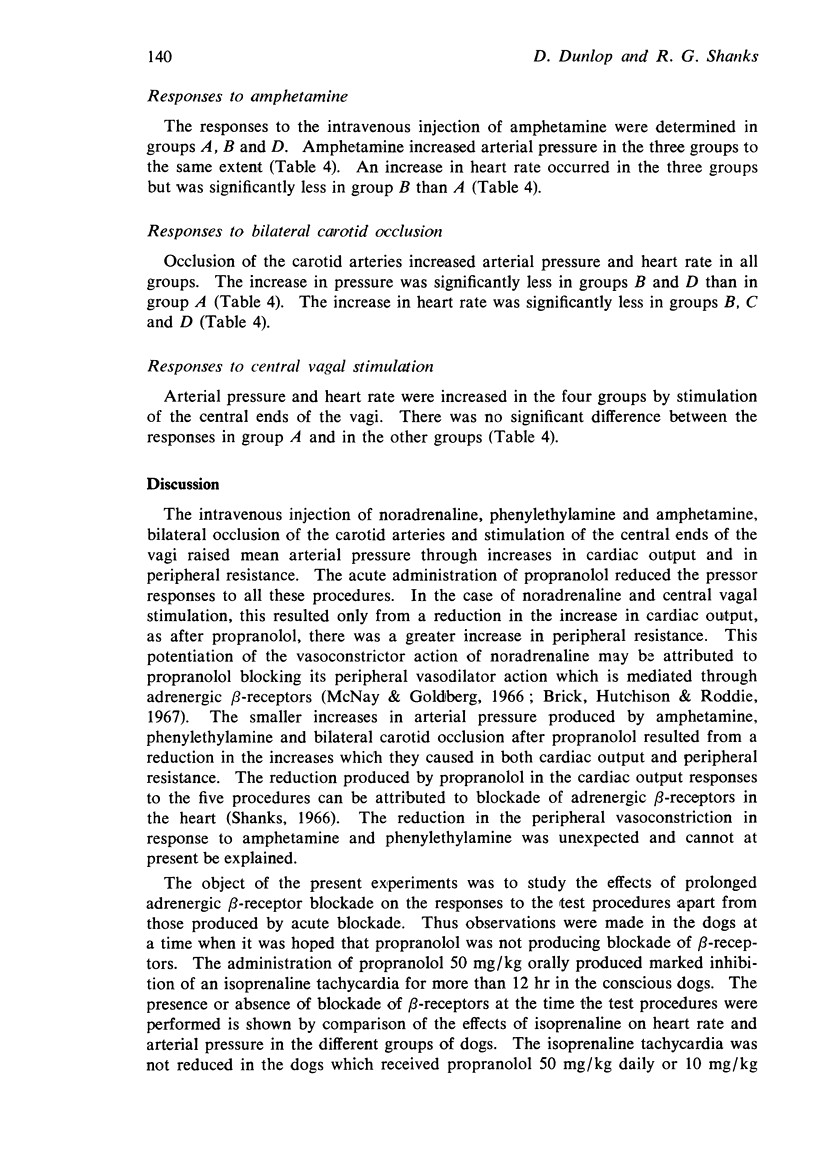

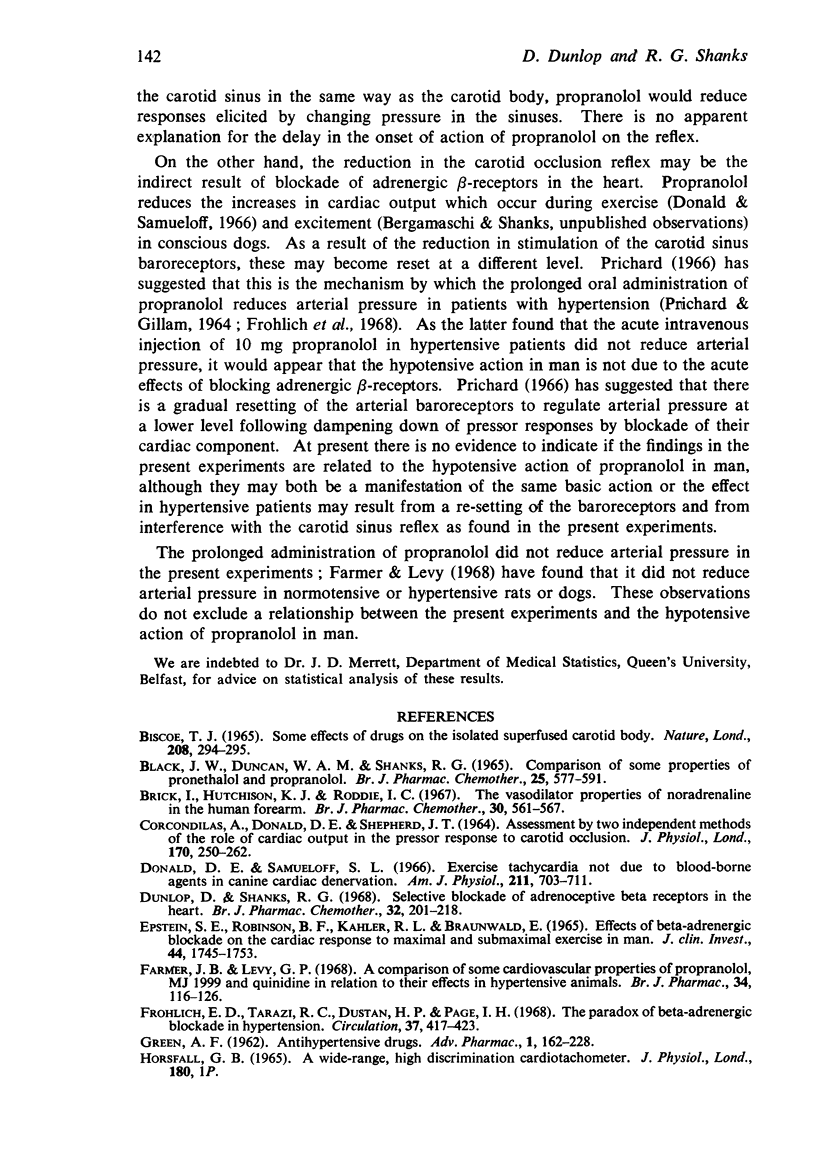

Selected References
These references are in PubMed. This may not be the complete list of references from this article.
- Black J. W., Duncan W. A., Shanks R. G. Comparison of some properties of pronethalol and propranolol. Br J Pharmacol Chemother. 1965 Dec;25(3):577–591. doi: 10.1111/j.1476-5381.1965.tb01782.x. [DOI] [PMC free article] [PubMed] [Google Scholar]
- Brick I., Hutchinson K. J., Roddie I. C. The vasodilator properties of noradrenaline in the human forearm. Br J Pharmacol Chemother. 1967 Aug;30(3):561–567. doi: 10.1111/j.1476-5381.1967.tb02162.x. [DOI] [PMC free article] [PubMed] [Google Scholar]
- CORCONDILAS A., DONALD D. E., SHEPHERD J. T. ASSESSMENT BY TWO INDEPENDENT METHODS OF THE ROLE OF CARDIAC OUTPUT IN THE PRESSOR RESPONSE TO CAROTID OCCLUSION. J Physiol. 1964 Mar;170:250–262. doi: 10.1113/jphysiol.1964.sp007328. [DOI] [PMC free article] [PubMed] [Google Scholar]
- Donald D. E., Samueloff S. L. Exercise tachycardia not due to blood-borne agents in canine cardiac denervation. Am J Physiol. 1966 Sep;211(3):703–711. doi: 10.1152/ajplegacy.1966.211.3.703. [DOI] [PubMed] [Google Scholar]
- Dunlop D., Shanks R. G. Selective blockade of adrenoceptive beta receptors in the heart. Br J Pharmacol Chemother. 1968 Jan;32(1):201–218. doi: 10.1111/j.1476-5381.1968.tb00444.x. [DOI] [PMC free article] [PubMed] [Google Scholar]
- Epstein S., Robinson B. F., Kahler R. L., Braunwald E. Effects of beta-adrenergic blockade on the cardiac response to maximal and submaximal exercise in man. J Clin Invest. 1965 Nov;44(11):1745–1753. doi: 10.1172/JCI105282. [DOI] [PMC free article] [PubMed] [Google Scholar]
- Farmer J. B., Levy G. P. A comparison of some cardiovascular properties of propranolol, MJ 1999 and quinidine in relation to their effects in hypertensive animals. Br J Pharmacol. 1968 Sep;34(1):116–126. doi: 10.1111/j.1476-5381.1968.tb07955.x. [DOI] [PMC free article] [PubMed] [Google Scholar]
- Frohlich E. D., Tarazi R. C., Dustan H. P., Page I. H. The paradox of beta-adrenergic blockade in hypertension. Circulation. 1968 Mar;37(3):417–423. doi: 10.1161/01.cir.37.3.417. [DOI] [PubMed] [Google Scholar]
- MORALES AGUILERA A., VAUGHANWILLIAMS E. M. THE EFFECTS ON CARDIAC MUSCLE OF BETA-RECEPTOR ANTAGONISTS IN RELATION TO THEIR ACTIVITY AS LOCAL ANAESTHETICS. Br J Pharmacol Chemother. 1965 Apr;24:332–338. doi: 10.1111/j.1476-5381.1965.tb01719.x. [DOI] [PMC free article] [PubMed] [Google Scholar]
- McNay J. L., Goldberg L. I. Comparison of the effects of dopamine, isoproterenol, norepinephrine and bradykinin on canine renal and femoral blood flow. J Pharmacol Exp Ther. 1966 Jan;151(1):23–31. [PubMed] [Google Scholar]
- POLOSA C., ROSSI G. Cardiac output and peripheral blood flow during occlusion of carotid arteries. Am J Physiol. 1961 Jun;200:1185–1190. doi: 10.1152/ajplegacy.1961.200.6.1185. [DOI] [PubMed] [Google Scholar]
- PRICHARD B. N., GILLAM P. M. USE OF PROPRANOLOL (INDERAL) IN TREATMENT OF HYPERTENSION. Br Med J. 1964 Sep 19;2(5411):725–727. doi: 10.1136/bmj.2.5411.725. [DOI] [PMC free article] [PubMed] [Google Scholar]
- PROCHNIK G., MAISON G. L., STUTZMAN J. W. Carotid-occlusion-pressor reflex: influence of existing mean arterial pressure, of anesthetics and of ganglionic- and adrenergic-blocking drugs. Am J Physiol. 1950 Sep;162(3):553–559. doi: 10.1152/ajplegacy.1950.162.3.553. [DOI] [PubMed] [Google Scholar]
- Paterson J. W., Dollery C. T. Effect of propranolol in mild hypertension. Lancet. 1966 Nov 26;2(7474):1148–1150. doi: 10.1016/s0140-6736(66)90471-5. [DOI] [PubMed] [Google Scholar]
- Prichard B. N. The treatment of hypertension by beta adrenergic blocking drugs. Angiologica. 1966;3(5):318–329. [PubMed] [Google Scholar]
- STONE C. A., ROSS C. A., WENGER H. C., LUDDEN C. T., BLESSING J. A., TOTARO J. A., PORTER C. C. Effect of alpha-methyl-3,4-dihydroxyphenylalanine (methyldopa), reserpine and related agents on some vascular responses in the dog. J Pharmacol Exp Ther. 1962 Apr;136:80–88. [PubMed] [Google Scholar]
- Shanks R. G. The effect of propranolol on the cardiovascular responses to isoprenaline, adrenaline and noradrenaline in the anaesthetized dog. Br J Pharmacol Chemother. 1966 Feb;26(2):322–333. doi: 10.1111/j.1476-5381.1966.tb01911.x. [DOI] [PMC free article] [PubMed] [Google Scholar]
- Shinebourne E., Fleming J., Hamer J. Effects of beta-adrenergic blockade during exercise in hypertensive and ischaemic heart-disease. Lancet. 1967 Dec 9;2(7528):1217–1220. doi: 10.1016/s0140-6736(67)90561-2. [DOI] [PubMed] [Google Scholar]
- Ulrych M., Frohlich E. D., Dustan H. P., Page I. H. Immediate hemodynamic effects of beta-adrenergic blockade with propranolol in normotensive and hypertensive man. Circulation. 1968 Mar;37(3):411–416. doi: 10.1161/01.cir.37.3.411. [DOI] [PubMed] [Google Scholar]
- Waal H. J. Hypotensive action of propranolol. Clin Pharmacol Ther. 1966 Sep-Oct;7(5):588–598. doi: 10.1002/cpt196675588. [DOI] [PubMed] [Google Scholar]


